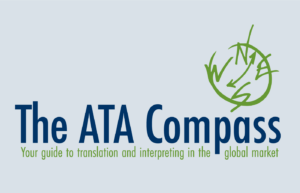What do Translation Buyers and Fourth Graders Have in Common?
Most translators and interpreters care deeply about the future of their professions and welcome the opportunity to talk to students of any age about their jobs. This was why I recently leapt at the chance to visit my daughter’s 4th grade class to talk about translation and interpretation. I hope the class came away from my talk with some valuable ideas. I know my visit certainly gave me some interesting and unexpected insights into the relationship between translation buyers and the younger generation.
Our local school has students from all over the world who together speak over 40 different languages and dialects. True, we live in a diverse neighborhood of Queens, which is in turn the most diverse borough in New York City, but this statistic is indicative of changes in school populations throughout the United States. According to the National Center for Education Statistics, “The percentage of public school students in the United States who were English language learners (ELLs) was higher in 2009–10 (10 percent, or an estimated 4.7 million students) than in 2000–01 (8 percent, or an estimated 3.7 million students).” This figure will only continue to grow over the coming decade, and it doesn’t even include children who speak a second language at home, but are not in ESL classes. Indeed, the percentage of public school students who identify as non-Caucasian or non-African American has grown over the past two decades as well, with 23% of students listed as Hispanic and 8% listed as Other.
With this information in mind, I knew that to make my talk relevant, I had to build it around the students and their experiences so that they could see what important roles translation and interpretation play in their lives. I started my talk by introducing myself and asking the class what the word translator means. Then I asked the students to tell me what languages they speak besides English, which led to a discussion about the meaning of the word “bilingual.” From there, we did a translation exercise, where I wrote a word on the board and had volunteers come up and write the same word in their languages. Next, we did an interpreting exercise, where I spoke a sentence and had volunteers interpret the sentence into their languages. We went on to talk about where translators and interpreters work, what kinds of tools they use, and what kind of training they need.
Finally, we looked through some supporting materials I brought in, including several of my dictionaries (even the dictionary I used in 4th grade!), translations of middle-grade books into English (the Ghosthunters series by Cornelia Funke, the Geronimo Stilton series), a translation into Russian of the second book in the Harry Potter series, and a Judy Moody book that gives examples of how the name Judy Moody has been translated into other languages. I explained how I use my dictionaries, and then we talked about the fiction books. I was quite impressed by how quickly the students were able to identify the various translation challenges that might arise with each book.
The most important insight I gained from my talk was that, even at a young age, these students are savvy citizens of the world. In addition to speaking their second languages at home, they help their families navigate their lives in their new communities by interpreting for their parents and grandparents in stores, on doctor’s visits, and even at their school. They also communicate with non-English speaking friends and family members in their native countries, and they may even travel to these countries during vacations. Without being aware of it, they serve as ambassadors in many different ways.
The lesson for translation buyers is that these students are your future customers. They will be buying your products and services to support and communicate with their communities here and abroad. They are one of your avenues into new markets. Translation providers and buyers must work together to get it right for them. Put simply, if they are not impressed by the way we work together to represent your company in their languages and cultures, they will not use your products and services or mine. Investment in high-quality translation services will guarantee a competitive edge that has the potential to last for years and will pay for itself many times over. Although I have known this all along, it is hardly an idea that I expected to have reinforced by a group of nine-year olds!
About the Author
Lucy Gunderson, CT is a Russian to English translator and Administrator of ATA’s Slavic Languages Division.
Language Services Directory
Subscribe to The ATA Compass
Connect with The ATA Compass
Recent Posts
What is a Certified Translation?
What are the basics of a certified translation? In the United States, anyone can certify a translation. A translator does not need to be certified in order to provide a…
Read MoreFind a Translator or Interpreter Near You
Searching for a Nearby Translator or Interpreter? Whether you require accurate document translations, real-time interpreting for an event, or specialized industry expertise, finding the right professional near you has never…
Read MoreExploring Translation and Interpreting Services
Why Are Language Services Essential in an Internationalized World? In a world where communication knows no bounds, effective language services are paramount. ATA helps you find professional translators and interpreters…
Read MoreThe ATA Compass
Want to reach more customers, grow your business, and improve your bottom line? The ATA Compass publishes articles and provides resources to show you how language professionals can help you…
Read MoreMachine Translation
What is machine translation? Machine translation (MT) is the use of automated software that translates text without human involvement. Adaptive MT is a technology that learns and adjusts in real-time…
Read MoreClient Assistance
Can I afford to hire a professional? You can’t afford NOT to. Poor translation and interpreting services can be disastrous for your business. See what’s at stake. Learn More What’s…
Read More






